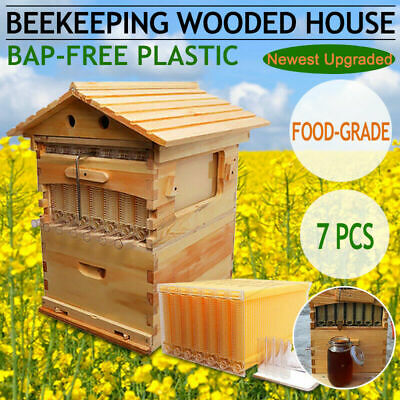-40%
8 MASON BEE HIVE HOUSE HAND MADE IN USA NEW SOLID CEDAR
$ 84.48
- Description
- Size Guide
Description
MASON BEE HIVE HOUSE HAND MADE IN USA NEW SOLID CEDAR.Listing is for 8 bee house
Beautiful hand-made Bee House. The house itself is made from solid western red cedar wood. This will insure that your bee house will last for years to come. The inside nesting panels are made from pine wood.
Your bee house will attract mason, orchard, leaf-cutter, aphid or carpenter bees. Attach the nesting box on the side of a post or building by using screws. The house should face East or Southeast. Bees love the morning sun which helps them fly early to collect pollen. Never place a bee house near an area where pesticides or herbicides are used. The house should be positioned 3-5 feet off the ground. The bees will find the house without any help.
Dimensions: 7” D X 10’" H X 5" W
Spring- When the weather starts to warm up to 55F, you will start to see adult mason bees in your area. This is the time that the males and females mate and the females will start looking for a location (your bee house) to lay her eggs. Typically the females will lay eggs until the end of Spring. It is very important to have your bee house up and ready before the adults emerge from their Winter nap.
Summer- After about a week, the eggs will hatch inside the house and the larvae will feed on the pollen and nectar that is available in each slot. In late June, the larva will spin a cocoon and begin to develop into an adult bee inside the cocoon. During this period, you will not see any bee activity on the outside of the bee house. Do not disturb the house at this time.
Fall- In October, you can finally remove the panels and see the cocoons inside the slots. Each nesting slot can contain up to 8 cocoons. At this time, you can carefully remove the cocoons and place them inside a container and store them in the refrigerator.
Winter- The cocoons are resting inside the refrigerator or outside in the bee house. The cocoons will hibernate for nearly 6 months. Make sure your house is clean and ready to go for Spring. Be sure to remove all of the nesting material from each slot in the house.
Next Spring
Once the temperature reaches 57F for several days, remove the cocoons from the refrigerator and place them outside to emerge. Usually this will be in late February or early March. Be sure to protect the cocoons by leaving them inside of a container. Place a small hole on one side of the container for the adults to escape once they emerge from their cocoons. Now the cycle starts all over again! For more information on timing and species available in your area, contact your local extension or farm bureau













